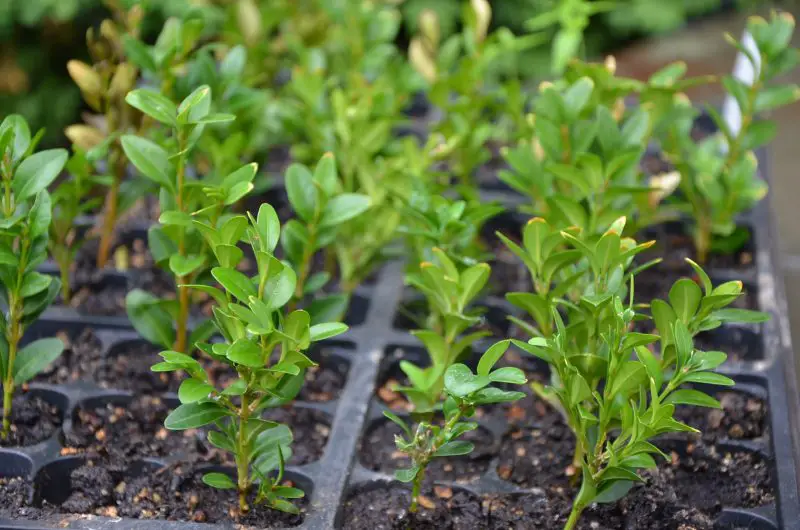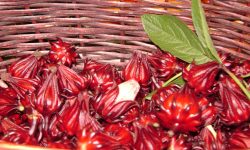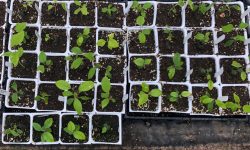Boxwood is a beloved evergreen shrub, valued for its dense foliage and elegant form. Gardeners and landscapers often use it to create hedges, borders, and ornamental shapes. Propagating boxwood allows you to expand your garden, preserve specific varieties, and maintain a consistent appearance. Learning the proper propagation techniques ensures strong, healthy new plants that thrive for years.
Understanding how to propagate boxwood requires knowledge of timing, tools, and methods. The right approach increases the success rate and produces vigorous shrubs. Whether you are a beginner or experienced gardener, mastering propagation can be both rewarding and practical. This guide provides expert advice, step-by-step instructions, and tips to help you grow long-lasting boxwood from cuttings or other propagation methods, turning your garden into a lush, vibrant space.
Choosing the Right Boxwood for Propagation

Selecting the right boxwood is the first step to successful propagation. Healthy, disease-free plants provide the best chance for strong new growth. Look for shrubs with vibrant, green foliage and well-formed branches. Avoid plants showing signs of pests, discoloration, or weak stems, as these issues can reduce rooting success and compromise the quality of the new plants. Strong parent plants set a solid foundation for long-lasting, vigorous shrubs.
Consider the variety of boxwood when planning propagation. Some cultivars are better suited to cuttings and have higher success rates. For example, common varieties like ‘English’ or ‘American’ boxwood are generally easier to root. Choosing a cultivar that matches your garden’s climate, sunlight, and soil conditions also ensures that new plants will thrive once established. Understanding the specific needs of each variety allows you to make informed decisions and improve the likelihood of long-lasting shrubs. Gardeners may also choose boxwoods with desired growth habits, such as compact or upright forms, to match landscaping goals.
Timing is another critical factor in propagation success. The best period for taking cuttings is typically late spring to early summer when new growth is semi-hardwood. Semi-hardwood cuttings have enough maturity to root effectively while still maintaining flexibility for handling. Selecting the right parent plant at the optimal time ensures robust cuttings that establish quickly and develop strong root systems. By carefully choosing healthy, suitable boxwood during the correct season, gardeners increase the chance of successful propagation and create a beautiful, enduring landscape filled with thriving shrubs.
Preparing Boxwood Cuttings for Rooting
Proper preparation of boxwood cuttings is essential for successful propagation. Start by selecting healthy, semi-hardwood stems that are free of disease or damage. Cuttings should be approximately 4 to 6 inches long, with several sets of leaves intact. Using sharp, clean pruning shears helps prevent crushing the stem and reduces the risk of infection, ensuring the cuttings have the best chance to develop roots.
After cutting, remove the lower leaves to expose a few inches of bare stem. This section will be inserted into the growing medium and is where roots will form. Maintaining intact upper leaves is crucial, as they continue photosynthesis and provide energy for root development. Some gardeners lightly trim the top leaves to reduce moisture loss and stress on the cutting. Additionally, dipping the cut end in a rooting hormone can significantly improve the rooting success rate by stimulating root growth and accelerating establishment.
The choice of growing medium also plays a critical role in propagation. A well-draining, sterile medium such as a mixture of perlite and peat moss prevents waterlogging while retaining enough moisture to support root formation. Preparing a suitable environment, including moderate humidity and indirect light, enhances the cutting’s ability to develop a strong root system. Proper preparation, combined with careful handling and attention to environmental conditions, lays the foundation for producing vigorous, long-lasting boxwood shrubs ready for planting in the garden.
Choosing the Right Rooting Medium
Selecting the proper rooting medium is crucial for successful boxwood propagation. A suitable medium provides stability, adequate moisture, and good aeration for developing roots. Many gardeners use a blend of peat moss and perlite or sand, which retains enough water while preventing waterlogging. Well-draining media prevent the cuttings from rotting and create an ideal environment for root initiation. Using a medium that is light and loose ensures that roots can spread easily and develop a strong, healthy system capable of supporting the mature shrub.
Sterility is another important factor when choosing a rooting medium. Using a clean, disease-free substrate reduces the risk of fungal or bacterial infections that can damage young cuttings. Avoid garden soil, as it may contain pathogens, inconsistent textures, or debris that interfere with root development. Commercially available propagation mixes are often preferred, as they provide a consistent structure, moisture retention, and proper aeration. A sterile medium enhances the cutting’s ability to form roots quickly and reduces the likelihood of failure due to contamination.
Finally, consider the balance of moisture retention and aeration. The medium should hold enough water to keep cuttings hydrated without becoming soggy while still allowing air to reach developing roots. Maintaining this balance encourages nutrient absorption, strong root formation, and overall plant vigor. Proper selection and preparation of the rooting medium, combined with healthy cuttings and suitable environmental conditions, significantly improve the success rate of propagation. This approach ensures that new boxwood shrubs grow into long-lasting, vibrant plants that thrive in the garden.
Optimal Light and Temperature Conditions
Providing Adequate Light for Boxwood Cuttings
Light is a critical factor for rooting success. Boxwood cuttings need bright, indirect sunlight to promote photosynthesis without causing stress. Direct sunlight can overheat delicate cuttings, leading to wilting or leaf scorch. Positioning cuttings near a north or east-facing window or using a grow light ensures they receive consistent illumination without exposure to harsh rays. Consistent light exposure helps the plant maintain energy for root initiation and early growth, which is essential during the first few weeks of propagation.
Sufficient light supports energy production necessary for root formation. Even with proper moisture and a good rooting medium, insufficient light can slow root growth and weaken the cutting. Gradually increasing light intensity as roots establish prepares young plants for outdoor conditions, ensuring robust growth. Monitoring light quality and duration allows gardeners to adjust their setup and prevent etiolation, where stems become elongated and weak. Proper lighting not only encourages healthy root systems but also strengthens leaves and overall plant vigor, improving long-term survival and performance in the garden.
Maintaining Optimal Temperature
Temperature plays a key role in propagation success. Boxwood cuttings root best in moderate temperatures, generally between 65 and 75 degrees Fahrenheit. Warmer conditions accelerate root formation, while cooler temperatures may delay growth or inhibit rooting entirely. Consistent temperature ensures steady metabolic activity within the cutting, supporting nutrient transport, hormone signaling, and cell division. This stability reduces stress and enhances the likelihood of healthy root development.
Avoid placing cuttings in drafty areas or near heating vents, as rapid fluctuations can stress the plant and cause leaf drop. Using a propagator, heat mat, or placing cuttings in a warm, humid location helps maintain ideal conditions. By carefully controlling temperature and providing a stable environment, gardeners increase the likelihood of successful rooting. Maintaining consistent warmth ensures that new boxwood shrubs develop strong, resilient roots, capable of thriving when transplanted outdoors, while also promoting faster establishment and healthier growth in the long term.
Watering and Humidity for Successful Rooting
Proper Watering for Boxwood Cuttings
Maintaining consistent moisture is essential for successful rooting. Boxwood cuttings require a medium that is evenly damp but not waterlogged. Overwatering can cause stem rot, fungal infections, or root decay, while under-watering can lead to dehydration and slow root development. Watering should be gentle, allowing the substrate to absorb moisture without disturbing cuttings or washing away rooting hormones. Gardeners often use a watering can with a fine spout or a spray bottle to control the flow and avoid compacting the medium.
Regular monitoring of moisture is crucial. Check the medium daily and adjust watering according to temperature, light, and humidity conditions. In warmer or drier environments, cuttings may require more frequent watering, while cooler, humid conditions require less. Proper watering encourages cell activity and nutrient transport within the cutting, supporting robust root formation. Consistently damp conditions, combined with a well-draining medium, increase the success rate of propagation. Paying attention to subtle changes in the cutting’s appearance, such as wilting or leaf color, helps gardeners maintain optimal hydration for healthy, long-lasting boxwood shrubs.
Maintaining Humidity Levels
High humidity is critical for preventing excessive moisture loss from leaves while roots are forming. Boxwood cuttings lose water through transpiration, and without sufficient humidity, they may wilt or dry out before establishing roots. Covering cuttings with a clear plastic dome, bag, or placing them in a mini-greenhouse creates a humid microenvironment that preserves leaf turgor and encourages consistent growth.
Maintaining proper humidity also stabilizes temperature and reduces stress on the cutting. Periodically removing the cover for ventilation prevents mold, mildew, and fungal growth while ensuring adequate air circulation. Monitoring humidity levels and making adjustments based on seasonal changes or indoor conditions ensures optimal root development. When combined with consistent watering, adequate light, and stable temperature, maintaining high but controlled humidity creates ideal conditions for root initiation. Gardeners who carefully manage humidity increase the likelihood of strong, resilient roots, ultimately producing vigorous new boxwood plants that establish successfully and thrive when transplanted into the garden.
Transplanting and Acclimating New Boxwood Plants
Preparing the Transplant Site
Choosing the right location is the first step in successful boxwood transplantation. Select a site with well-draining soil, partial to full sunlight, and protection from harsh winds. Proper soil preparation is crucial: loosen the soil, remove weeds, and incorporate organic matter or compost to enhance fertility and drainage. Well-prepared soil encourages healthy root growth and prevents waterlogging, which can damage young plants. By understanding the soil needs of boxwood, gardeners can create optimal conditions for long-term success.
Spacing is also essential when planting multiple boxwoods. Provide adequate distance between shrubs to promote airflow, reduce competition for nutrients, and allow room for future growth. Preparing the transplant site in advance minimizes transplant shock and ensures that roots can expand freely. Adding mulch after planting helps retain moisture, suppress weeds, and maintain consistent soil temperature. By considering soil quality, sunlight exposure, and proper spacing, gardeners establish a foundation that supports vigorous growth, strong root development, and long-lasting boxwood shrubs that thrive in their new garden location.
Acclimating Boxwood Cuttings
Gradual acclimation is key for young boxwood plants. Once roots have formed, begin exposing cuttings to outdoor conditions for a few hours each day. This process, known as hardening off, allows plants to adjust to variations in light, temperature, and humidity. Gradual acclimation reduces stress and prevents leaf burn, wilting, or slowed growth. Proper timing and careful monitoring ensure the transition is smooth and successful.
During this period, pay close attention to watering. Newly transplanted boxwoods require consistent moisture to support root establishment while avoiding waterlogging, which can lead to root rot. Applying a thin layer of mulch around the base helps retain soil moisture, regulate temperature, and protect delicate roots. Gardeners may also shield young plants from strong winds or intense sun during the initial weeks. By gradually introducing cuttings to their permanent environment and monitoring their needs, gardeners ensure healthy adaptation, robust root systems, and stronger, long-lasting shrubs that will flourish in the garden for years.
Common Challenges and Troubleshooting in Boxwood Propagation
Rooting Failure
Rooting failure is a common challenge in boxwood propagation. Cuttings may fail to develop roots due to improper moisture, poor-quality medium, or insufficient light. Overwatering can cause stem rot, while underwatering can dehydrate the cutting, preventing root formation. Ensuring the medium is well-draining and maintaining consistent, moderate moisture are crucial steps. Using clean, sharp tools when taking cuttings also reduces damage and minimizes infection risk. Gardeners should select healthy parent plants with strong, disease-free stems to maximize rooting potential.
Timing and environmental factors also play a critical role in rooting success. Using cuttings that are too young or too old may reduce the likelihood of root development. Semi-hardwood cuttings taken in late spring or early summer generally yield the best results, as they have sufficient maturity while remaining flexible. Monitoring cuttings closely for signs of stress, such as wilting or yellowing leaves, and adjusting light, humidity, or temperature conditions promptly can significantly improve outcomes. By combining careful selection, proper technique, and attentive care, gardeners can overcome rooting challenges and successfully propagate strong, long-lasting boxwood shrubs.
Pests and Diseases
Boxwood cuttings are susceptible to pests and diseases that can hinder successful propagation. Fungal infections, such as powdery mildew, root rot, or leaf spot, can damage young plants and prevent healthy root formation. Insects like aphids, spider mites, and scale can weaken cuttings by feeding on leaves, causing stress and reducing growth potential. Using a sterile medium and keeping tools clean helps reduce the risk of contamination, while spacing cuttings properly ensures good air circulation to prevent fungal outbreaks.
Preventive care is essential for successful propagation. Gardeners should inspect cuttings regularly for early signs of disease or infestation. Applying gentle organic treatments or appropriate chemical solutions can protect the plants without harming their delicate roots. Maintaining optimal humidity, light, and temperature further strengthens cuttings against pests and diseases. By combining vigilance, preventive measures, and proper environmental management, gardeners can minimize damage, improve rooting success, and establish healthy, long-lasting boxwood shrubs ready for transplanting.
Environmental Stress
Environmental stress is a major factor that can compromise boxwood propagation. Sudden fluctuations in temperature, excessive direct sunlight, or prolonged low humidity can cause wilting, leaf drop, or slowed root development. Boxwood cuttings require stable conditions, including moderate light, consistent warmth, and controlled humidity, to support cellular activity and encourage root initiation. Failure to maintain these conditions can significantly reduce the success rate of propagation.
To mitigate stress, gardeners should gradually acclimate cuttings to outdoor conditions or higher light levels. Using protective covers, shading, or propagators helps regulate temperature and humidity while providing a controlled environment. Monitoring cuttings closely for signs of stress and adjusting care practices as needed ensures cuttings remain healthy. By creating a stable, supportive environment and addressing environmental challenges promptly, gardeners improve the likelihood of strong root formation and successful establishment, ultimately producing resilient, long-lasting boxwood plants that thrive in their intended landscape.
Long-Term Care for Newly Propagated Boxwood
Once boxwood cuttings have rooted and been transplanted, ongoing care is crucial to ensure healthy growth and long-term survival. Regular watering is essential, especially during the first few months after planting. The soil should remain consistently moist but not waterlogged, allowing roots to establish without the risk of rot. Applying a thin layer of mulch around the base helps retain soil moisture, regulate temperature, and suppress weeds, creating a favorable environment for young shrubs.
Fertilization supports sustained growth and vibrant foliage. Using a balanced, slow-release fertilizer in the early growing season encourages root development and overall plant health. Avoid over-fertilizing, which can stress the plant or burn roots. Monitoring for pests and diseases is also important. Newly established boxwoods may be more vulnerable to infestations or fungal infections, so early detection and treatment help maintain plant vigor and prevent long-term damage.
Pruning and shaping young shrubs promote strong structure and dense growth. Light pruning encourages branching, while removing damaged or weak stems prevents the spread of disease. As the boxwood matures, gradual adjustments to watering, fertilization, and pruning maintain healthy foliage and compact form. By providing attentive, consistent care during this critical period, gardeners ensure that newly propagated boxwood plants thrive, develop robust root systems, and transform into resilient, long-lasting shrubs that enhance any landscape for years to come.
Seasonal Timing for Boxwood Propagation
Timing is critical for successful propagation. Boxwood cuttings root best during late spring to early summer when stems are semi-hardwood. Semi-hardwood cuttings have enough maturity to develop roots efficiently while remaining flexible enough for handling. Early spring cuttings may still be too tender, while late summer cuttings might face heat stress or reduced humidity. Choosing the right season maximizes rooting potential and minimizes failure.
Seasonal timing also affects environmental conditions essential for rooting. Warmer temperatures and longer daylight hours during optimal periods enhance photosynthesis and cellular activity, accelerating root formation. Proper timing also reduces exposure to seasonal pests and fungal outbreaks, which are more prevalent in late summer or fall. Understanding these environmental patterns allows gardeners to provide consistent care and stable conditions that promote healthy root growth.
Planning propagation around seasonal cycles ensures cuttings receive adequate light, temperature, and humidity. Observing local climate patterns, including rainfall and average temperatures, helps determine the best weeks for taking cuttings. By combining careful timing with proper cutting selection, gardeners improve the likelihood of producing healthy, vigorous boxwood shrubs. Additionally, seasonally timed propagation allows for better scheduling of subsequent care, such as hardening off and transplanting, ensuring long-term establishment and resilience in the garden.
Benefits of Propagating Your Own Boxwood
Propagating boxwood at home offers both practical and aesthetic advantages. Home propagation is cost-effective, allowing gardeners to expand their landscapes without purchasing new plants. It also enables cloning of preferred cultivars, preserving traits such as leaf color, growth habit, and disease resistance, ensuring uniformity across hedges and borders.
Propagation provides a hands-on learning experience. Gardeners gain insight into plant biology, rooting processes, and care requirements, improving overall gardening skills. Propagated plants often adapt better to local soil and climate conditions, resulting in stronger, more resilient shrubs than those purchased from nurseries. Additionally, growing your own plants allows experimentation with different techniques, cutting ages, and environmental adjustments for optimal growth.
Sustainability is another key benefit. Home propagation reduces reliance on commercially grown plants, lowering transportation and packaging waste. It encourages self-sufficiency and environmentally conscious gardening practices. Successfully propagating boxwood at home gives gardeners a sense of accomplishment, as they witness healthy, long-lasting shrubs thriving in their landscapes. Over time, this approach contributes to a greener, more sustainable garden while enhancing aesthetic appeal and plant diversity.
FAQ About Propagating Boxwood
How long does it take for boxwood cuttings to root?
Boxwood cuttings usually develop roots within 4 to 8 weeks, depending on environmental conditions, cutting type, and care. Semi-hardwood cuttings taken in late spring or early summer tend to root faster. Maintaining consistent moisture, adequate light, and proper temperature accelerates root formation and improves success rates.
Can I propagate boxwood from hardwood cuttings?
Yes, hardwood cuttings can be propagated, but they root more slowly than semi-hardwood cuttings. Hardwood stems are mature and less flexible, so they may require longer rooting periods and careful environmental control. Success rates are lower, but proper care, including moisture management and protection from stress, increases the likelihood of successful rooting.
How often should I water newly propagated boxwood cuttings?
Newly propagated boxwood cuttings need consistently moist soil. Water when the medium begins to dry but avoid overwatering, which can cause rot. Using a fine mist or gentle watering helps maintain even moisture without disturbing cuttings. Monitoring daily ensures the proper balance for optimal root development.
Do I need to use rooting hormone for boxwood cuttings?
Rooting hormone is recommended to improve rooting success, especially for semi-hardwood or hardwood cuttings. It stimulates root formation and reduces stress on the cutting. While some cuttings may root naturally, using hormone powder or gel increases speed, uniformity, and overall success rates.
When should I transplant rooted boxwood cuttings outdoors?
Transplant rooted cuttings once they develop a healthy root system and are acclimated to outdoor conditions. Gradually harden off plants by exposing them to sunlight and outdoor temperature variations for several days. This minimizes stress and ensures strong establishment in their permanent garden location.
Conclusion
Successfully propagating boxwood requires careful planning, proper cutting selection, and consistent care. By understanding seasonal timing, using healthy parent plants, and maintaining optimal moisture, light, and temperature, gardeners can overcome common challenges like rooting failure, pests, and environmental stress. Gradual acclimation and attentive long-term care ensure young shrubs establish strong roots and thrive in the garden. With patience and proper techniques, anyone can propagate robust, healthy boxwood plants. These steps not only save money but also allow gardeners to create beautiful, long-lasting landscapes filled with resilient, well-maintained shrubs.






